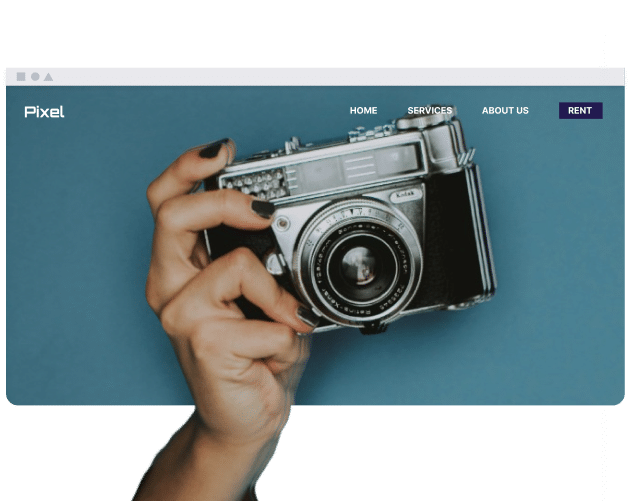Jakie są różne rodzaje wizualizacji danych?
Różne typy wizualizacji danych obejmują:
- Wykresy słupkowe: Pomagają w prezentowaniu danych kategorycznych, umożliwiając wizualne oddzielenie poszczególnych kategorii.
- Wykresy liniowe: Zapewniają przejrzystą reprezentację trendów danych w określonym przedziale czasowym.
- Wykresy kołowe: Służą do przedstawiania ułamków lub proporcji czegoś.
- Wykresy punktowe: Przydatne do pokazywania potencjalnych zależności między dwiema zmiennymi.
- Histogramy: Ilustruje wartości jednej zmiennej w odniesieniu do ich częstotliwości.
- Mapy: Mogą być używane do wyświetlania danych, które mają komponent przestrzenny lub geograficzny.
Jak wybrać odpowiedni typ wizualizacji danych dla moich danych?
Opcję wizualizacji danych można wybrać na podstawie poniższych czynników:
- Dane, które posiadasz (kategoryczne, liczbowe lub geograficzne).
- Twój cel (porównywanie, trendowanie, pokazywanie rozkładów).
- Odbiorcy (ich poziom zrozumienia).
- Komunikat, który chcesz przekazać.
Jakich narzędzi używa się do tworzenia wizualizacji danych?
Narzędzia używane do tworzenia wizualizacji danych obejmują:
- Oprogramowanie do arkuszy kalkulacyjnych (np. Microsoft Excel, Google Sheets).
- Tableau.
- Power BI.
- Biblioteki Pythona (np. Matplotlib, Seaborn).
- D3.js.
Twój poziom umiejętności i złożoność twoich wymagań określają, którego narzędzia użyć. Do podstawowych wykresów można wykorzystać arkusze kalkulacyjne, ale złożone i interaktywne wizualizacje wymagają specjalistycznych narzędzi. D3.js, biblioteka JavaScript, jest świetna do wizualizacji internetowych, jednak wymaga znajomości kodowania.
Jakie są najlepsze praktyki tworzenia skutecznych wizualizacji danych?
Najlepsze praktyki tworzenia efektywnych wizualizacji danych obejmują:
- Unikanie niepotrzebnej złożoności.
- Wdrażanie wyraźnych nagłówków i tytułów.
- Wybieranie odpowiednich kolorów.
- Zapewnienie jednolitości.
- Prezentowanie danych w formie narracji.
Dzięki zastosowaniu tych technik wizualizacja staje się bardziej czytelna, co zmniejsza prawdopodobieństwo błędnej interpretacji lub nieporozumień co do przekazu. Pamiętaj o spełnieniu wymagań dotyczących dostępności Twojej publiczności poprzez stosowanie kombinacji kolorów o wysokim kontraście i dodawanie opisów tekstowych dla elementów nietekstowych.
Jakie są najczęstsze pułapki, których należy unikać podczas wizualizacji danych?
Zawsze ważne jest, aby analizować swoje wizualizacje i szukać sposobów na optymalizację ich przejrzystości i skuteczności. Rozważ:
- Niewłaściwe użycie kolorów: Aby skupić uwagę odbiorcy i zwiększyć przejrzystość, używaj kolorów, które poprawiają czytelność wizualną.
- Przeładowanie informacjami: Aby ułatwić zrozumienie, przedstaw ważne informacje w jak najmniejszej liczbie słów.
- Używanie nieodpowiednich typów wykresów: Używaj wykresów, które przedstawiają trendy i wzorce, na których należy się skupić.
- Wprowadzające w błąd skale: Regularnie sprawdzaj dokładność skal, aby zapewnić wiarygodność danych i ich prawidłową interpretację.
- Ignorowanie kontekstu: Podaj kontekst niezbędny do prawidłowej interpretacji danych.
Jak wizualizacja danych może być wykorzystana do opowiadania historii?
Wizualizacja danych może pomóc w opowiadaniu historii za pomocą następujących metod:
- Tworzenie narracji.
- Skupienie się na istotnych wydarzeniach.
- Kontekstualizacja informacji.
- Angażowanie odbiorców.
- Przedstawianie zmian w czasie.
Połączenie elementów wizualnych i danych może mieć wpływ na zrozumienie przez odbiorców i zaangażowanie. Aby poprawić widoczność i zrozumienie kluczowych informacji w wizualizacjach, rozważ użycie adnotacji, objaśnień lub innych narzędzi.
Podsumowanie
Tworzenie atrakcyjnych wykresów to nie jedyny aspekt wizualizacji danych. Najważniejsza jest zdolność przekształcania surowych danych w jasne i zwięzłe informacje. Bez odpowiedniego przekazu i czytelnych wizualizacji, dane pozostaną bezużyteczne, bez względu na to, jak interesujące mogą być; dlatego wizualizacja danych może pomóc użytkownikom w podejmowaniu decyzji opartych na danych.

